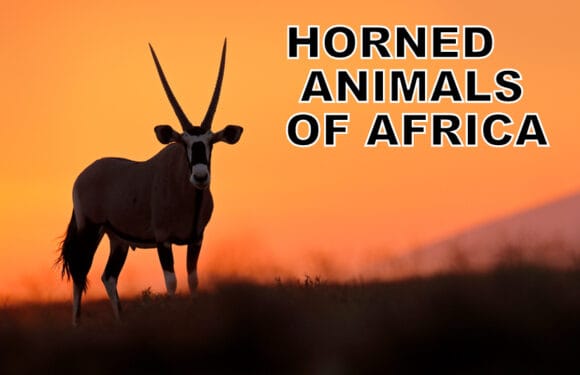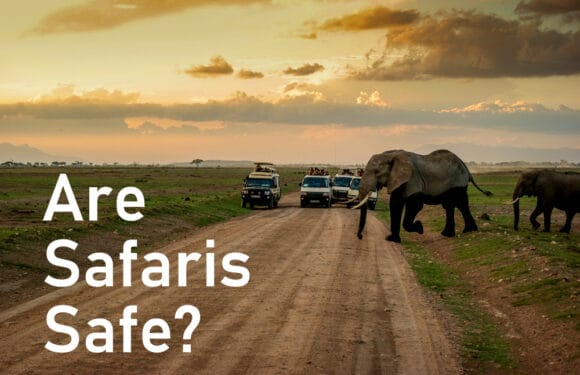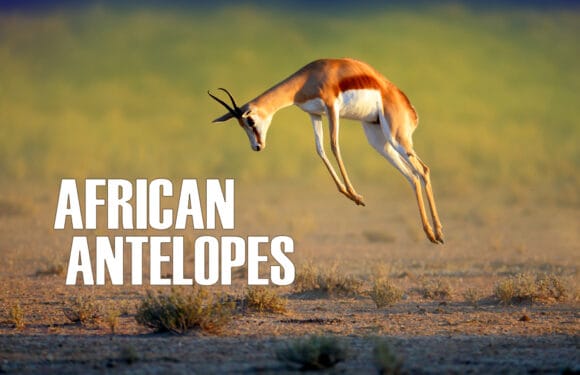
When it comes to wildlife, lions are the pride of Tanzania. Home to 50% of the world’s wild lion population, the country hosts more lions than any other nation. Known as one of the best safari destinations on earth, people from around the globe travel here to catch a glimpse of these majestic beasts.
Here are 10 fun facts about lions.
1. They are the Second Largest Cat on the Planet
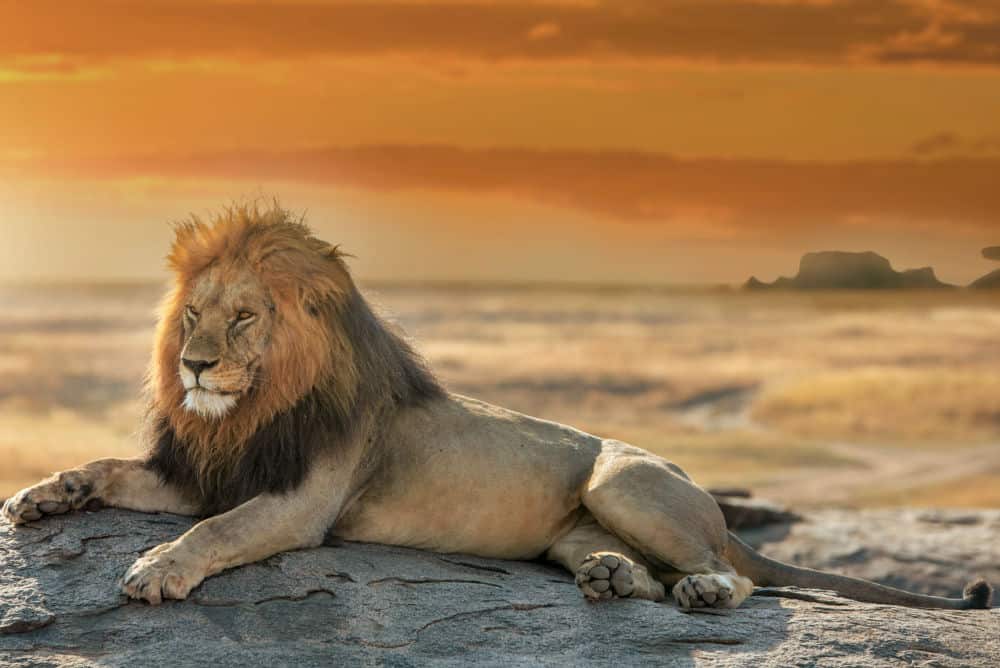
While one might assume lions would hold the title of the largest cat in the world, they actually fall at number two right behind tigers.
The average weight of a male lion is around 400 pounds (180 kilograms), while the females weigh in at around 290 pounds (130 kilograms). As for their height, they stand between 3.5 and 4 feet (1 and 1.2 meters) at the shoulder and grow to be about 10 feet (3 meters).
According to the Guinness Book of World Records, the largest lion recorded in captivity was a black-maned male named Simba. He stood at a stately shoulder height of 44 inches (1.11 meters). (Did you know that the Swahili word for lion is “simba?” Just like the main character in the movie The Lion King!)
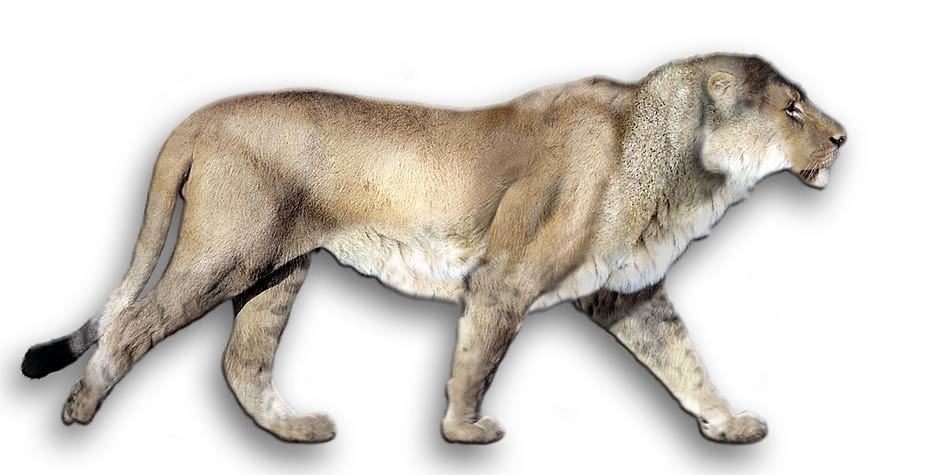
Modern lions are without a doubt an impressive size, but, the biggest of their species has long been extinct. The Panthera leo atrox, also known as the American Cave Lion, is estimated to have been 25% larger than lions today and weigh a whopping 771 pounds (350 kilograms).
2. Lions Eat 11-16 Pounds of Meat Per Day
Lions have adapted to their dry savanna habitat and can survive up to four days without drinking water. Even without water sources, these resourceful creatures stay hydrated with the blood of their prey and from plants like the Tsamma melon.
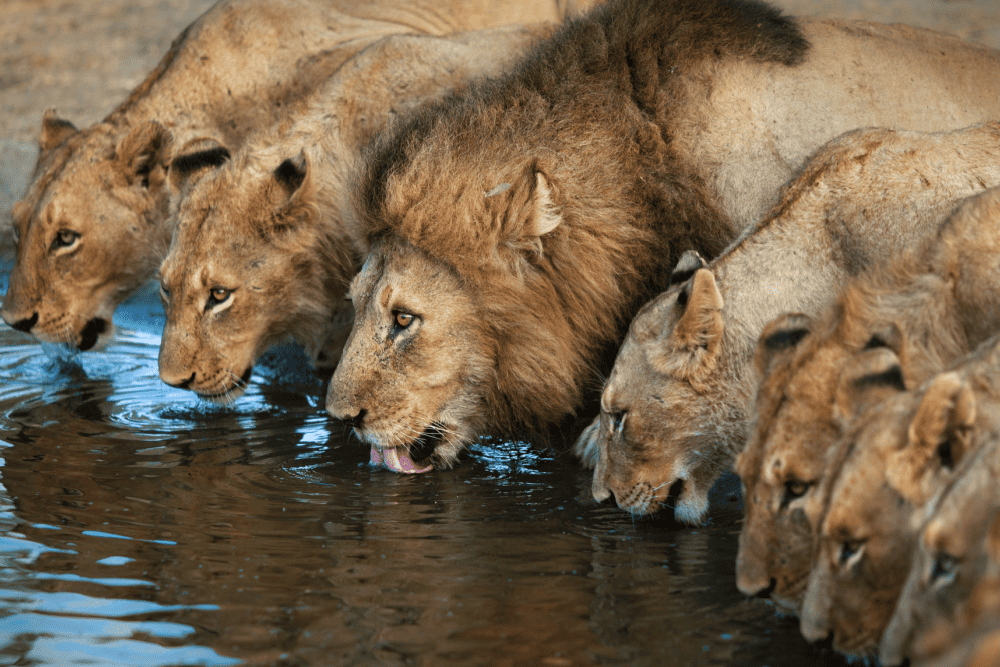
While water might not be a daily need for these big cats, food certainly is. Males require about 16 pounds (7.2 kilograms) of meat daily, and females about 11 pounds (5 kilograms). These hefty animals prey on zebra, wildebeest, and Cape buffalo. But, when food is scarce they will settle for smaller game like mice, birds, lizards, and hares. Lions are also known to steal food from hyenas and other predators.
3. Lionesses are the Hunters

Unlike other species in the animal kingdom, lionesses do the lion’s share of the hunting. Female lions are smaller and more agile, which is an advantage for stalking and killing prey. Males will sometimes join the hunt when stalking larger prey, but it is mostly up to the lionesses.
When feeding time comes around, however, the males get first dibs on the meat, followed by the females, then the cubs. Young lions don’t begin to hunt until they are about one year old.
Instead of collecting food, the main duty of male lions is to defend the group’s territory from competing prides and predators. When they aren’t off hunting, the lionesses of the pride are protecting the cubs. It’s easy to say they do it all.
4. They are Really Social Creatures
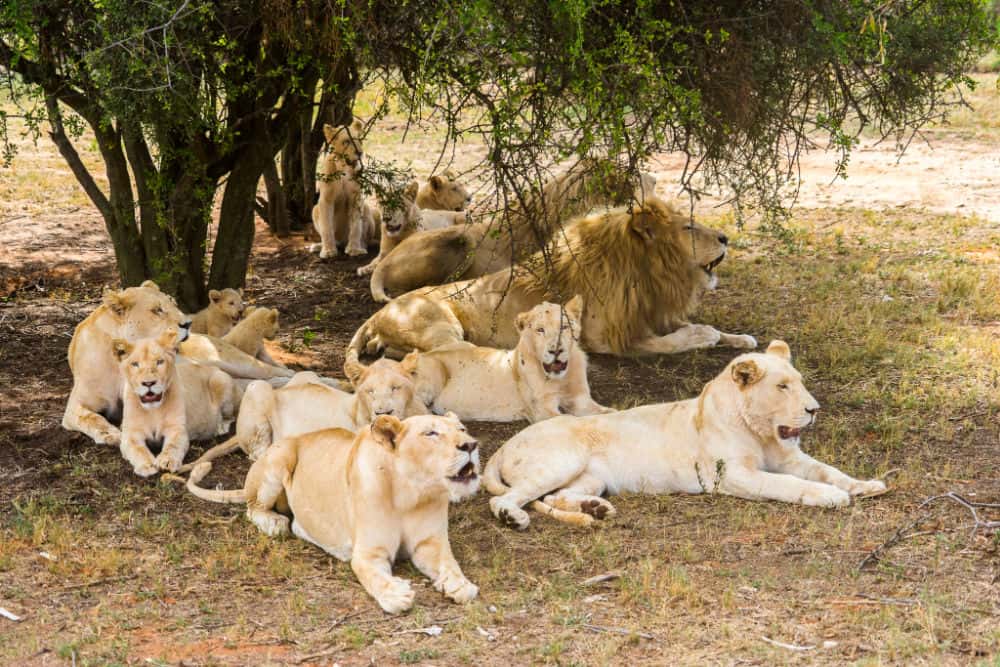
Cats are known for being solitary creatures, but not lions. In fact, lions are the only cat species that live in groups – referred to as a pride. Prides are made up of anywhere from two to 40 lions and comprise three to four males, and around 12 females, along with their cubs.
Within a pride, all the lionesses are related. The female cubs will continue to live with the group throughout their lives, while the males will leave when they are grown and create their own pride. Young males establish a pride of their own by taking over an existing one from another male.
5. Lionesses Share Child-Rearing Duties
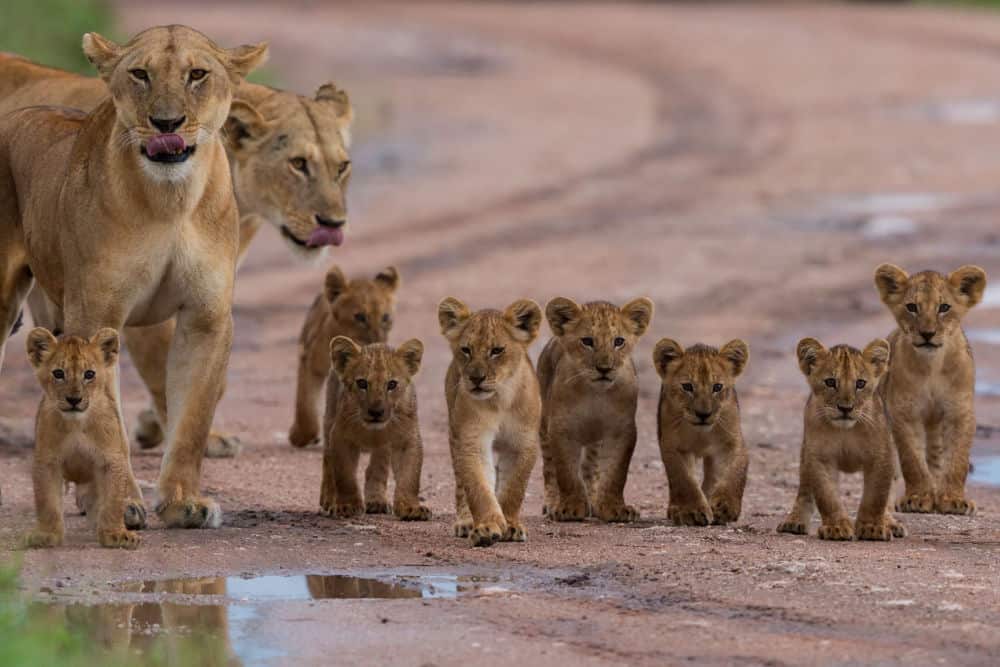
They say it takes a village to raise a child, or in the case of lions, a pride to raise a cub. Although lions do not have a specific breeding season, the female lions will synchronize their birth periods and raise their cubs together – referred to as a crèche.
The mothers will nurse, care for, and help raise any cubs in their entire pride, not just their own. This communal child-rearing strategy is meant to improve the chances of survival, as lionesses only give birth to between one and four babies. Cubs are cared for until the age of two, when the mothers go through the breeding process again.
6. They are at the Top of the Food Chain
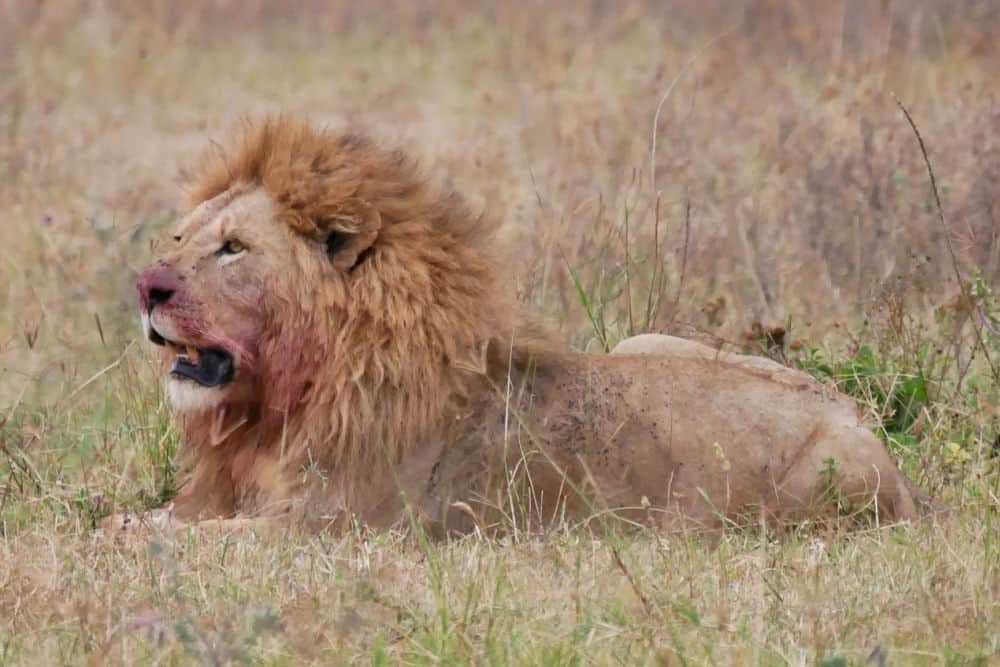
Lions are apex predators, or top predators, which means they are at the top of the food chain in the wild. As one of the most dangerous animals found in Africa, their only predators are humans.
Humans pose a great risk to the survival of the lions in the form of illegal wildlife trade, poaching, and climate change. The International Union for the Conservation of Nature (IUCN) estimates that there are fewer than 25,000 lions remaining in Africa, and has classified them as vulnerable to extinction.
Eco-conscious small group safaris are one way to appreciate lions from a distance without disrupting or removing them from their habitat.
7. Their Roars Can be Heard from Miles Away
Unlike their smaller cousins, lions don’t purr, they roar. Their powerful call can reach up to 114 decibels -the same noise level as a chainsaw – and can be heard from 5 miles away.
Both male and female lions roar, however, their howls are used for different purposes. Males roar as a way to show dominance, protect their territory from intruders, or signal to the pride that there is danger nearby. Females, on the other hand, roar to communicate with males during mating periods.
As a way to mark their territory, a pride will also roar together in a 40-second calling sequence, with even the cubs joining in.
8. Their Manes Tell a Story
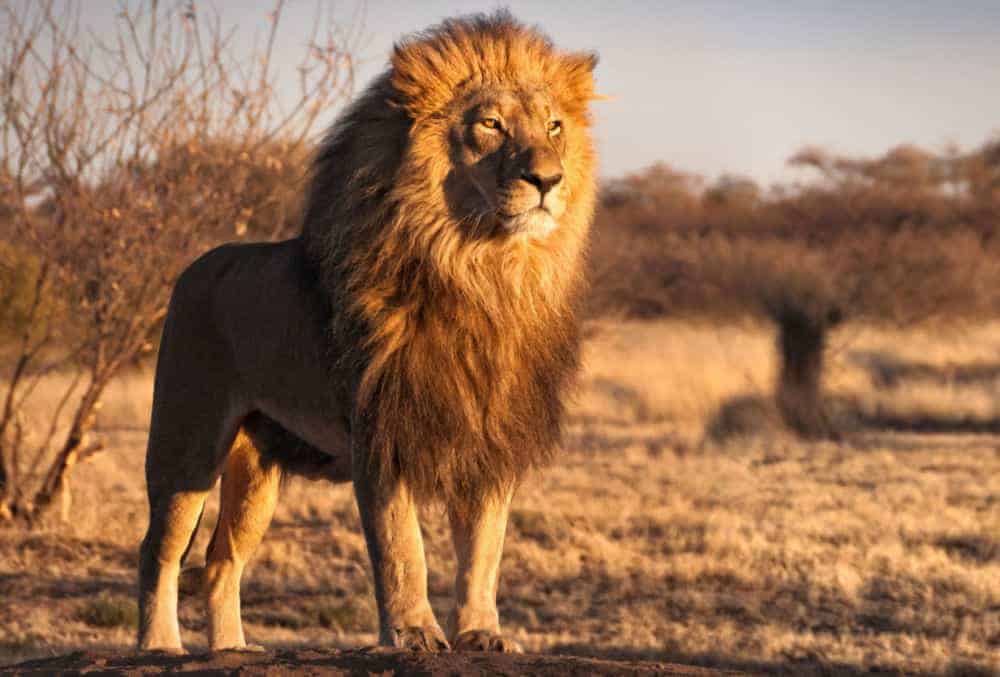
One of the most distinctive features of a lion is the mane. These luxurious locks are not only for show but can give insight into a lion’s age, health, and environment.
Male lions begin to grow their main at a year old. As they begin to age their mane begins to darken and grow up to 6 inches (16 centimeters) long. Thicker and darker manes signal fitness and dominance to other lions, and are more attractive to females. Studies have even found higher testosterone levels in cats with darker manes.
However, not all male lions sport mains. The lions of Tsavo National Park in Kenya are primarily maneless. While there is not one consensus, one theory is that the hot, thornbush-covered environment they live in makes long mains too much of a hassle.
9. Lions Can Climb Trees – Poorly
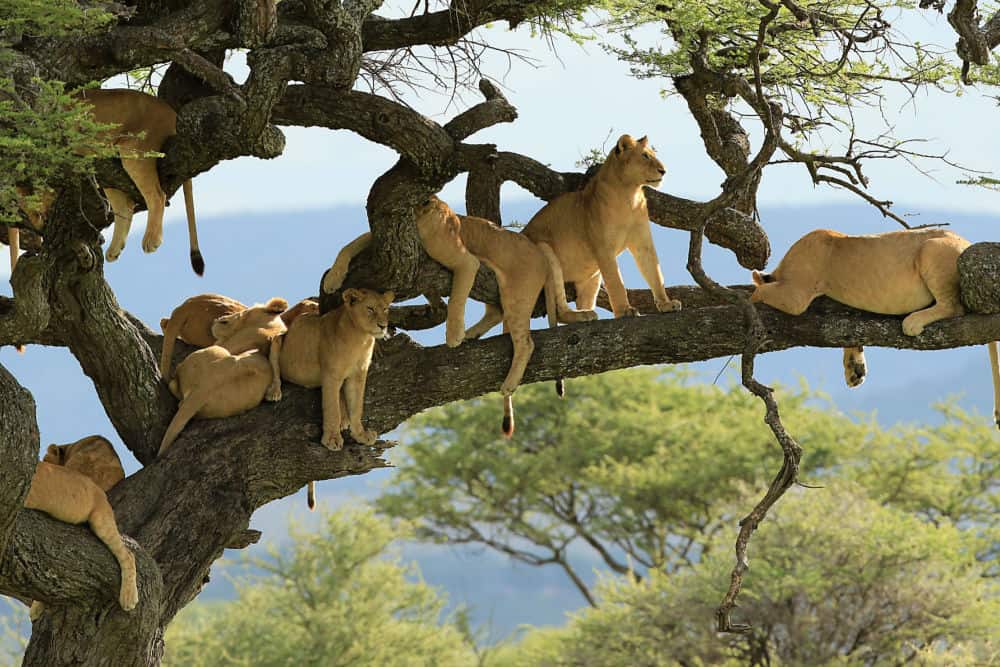
Most images of lions show them roaming open plains, but did you know that in some parks these big cats hang out in trees? Unlike their leopard cousins, who are adept at climbing trees, lions were not adapted to do the same. Lions have big, bulky builds that are not particularly suited for climbing.
However, some prides of lions have found it is useful for a couple of reasons. Up in the trees, they have a better vantage point of other animals either for hunting or for safety. Although they are apex predators they have been known to climb trees to escape herds of buffaloes.
Hanging out up high also provides comfort. These innovative lions have found it is a way to avoid biting insects on the ground and overall it is a lot cooler. Travelers can catch a glimpse of tree-climbing lions at national parks in Tanzania and Uganda.
10. Lions Are Only Found in Two Parts of the World

Lions were declared a vulnerable species in 1996 and their numbers continue to decline. In modern times there are just two recognized subspecies in the wild, the African lion (Panthera leo leo), and the Asiatic lion (Panthera leo persica).
African lions can be found south of the Sahara desert, while the Asiatic lion can only be found around Gir Forest National Park in western India. The only way to catch groups of lions today is to take a safari in eastern or southern Africa.
Lion Quick Facts
- Scientific Name: Panthera leo
- Common Name: Lion
- Size: 3-4 feet tall, 4.5-6.5 feet body with 26-40 inch tail
- Weight: 265-420 pounds
- Lifespan: 10-14 years
- Diet: Carnivore
- Habitat: Sub-Saharan Africa
- Conservation Status: Vulnerable
———-
Ultimate Kilimanjaro® is one of the leading safari companies in Tanzania. Our expert guides have been leading tours for over 15 years.
Want to see these big cats with your own eyes? Book an Ultimate Kilimanjaro® safari today.





















































